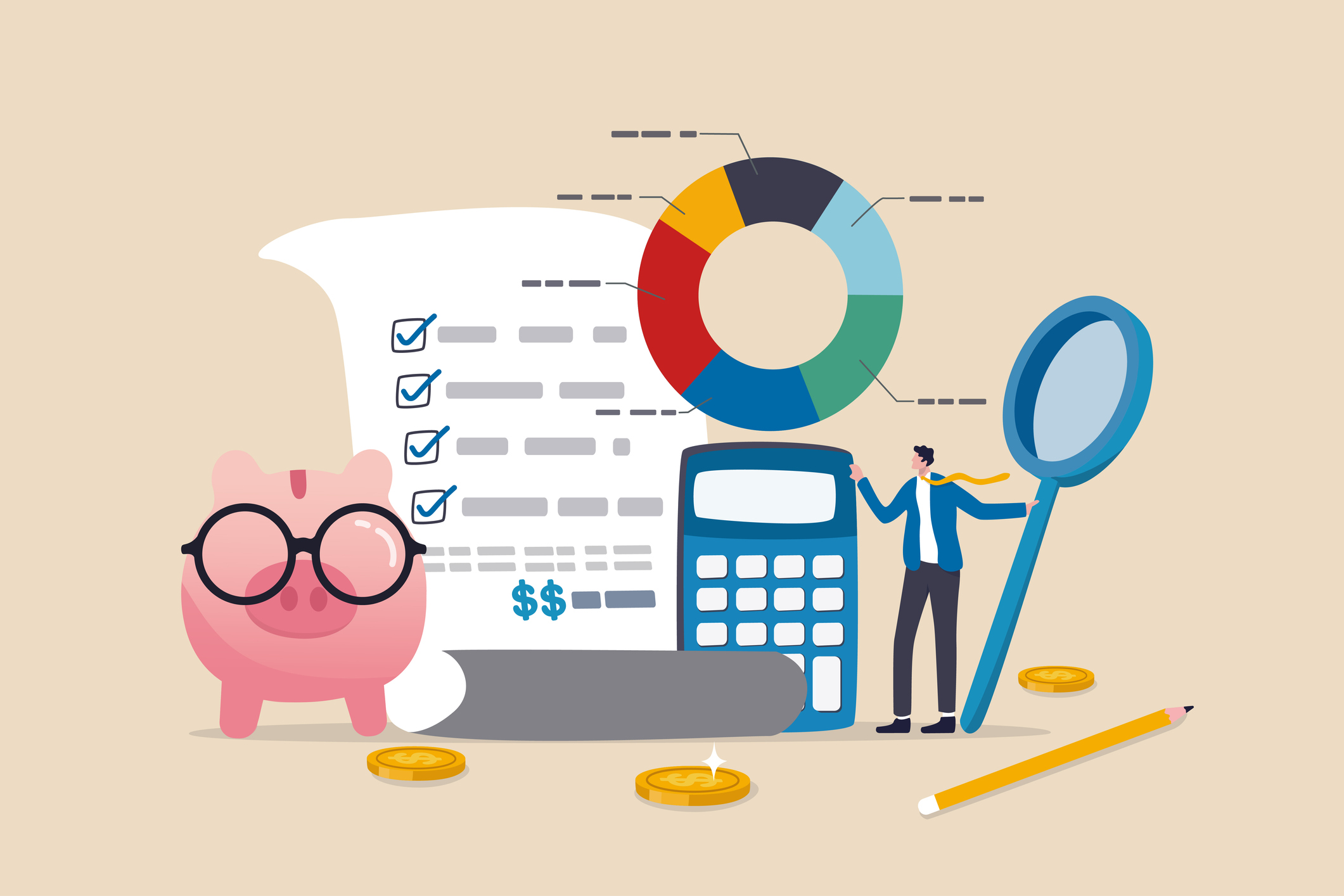Most posts, blogs, and discussion boards we see feature lengthy comments about adding to a Roth IRA. When do you convert? What tax brackets make sense for contributions? Am I even eligible in the first place?
But what do you do when you’ve made the choice to build a Roth IRA and have reached the point where its time to withdraw? The calculus is murky because the answer is largely preferential. Here’s what we consider when we work with clients and help them through these choices:
Future Tax Rates
Pulling money from a Roth IRA is in part a decision on future expectations of tax rates. Lower taxes in the future are generally a good indication to spend from the Roth now, while higher future tax rates suggests its better to pull from a Roth down the line. That’s pretty straightforward.
The complication comes from forecasting those tax hikes. Your opinions on the Federal budget deficit aside, taxes aren’t preordained to go up in the future. The last major overhaul to the tax code came about in 2017 with the Tax Cuts and Jobs Act (TCJA). Taxes were slashed for almost every American at a time when unemployment was near a 50-year low. If ever there was a time to raise taxes and plug the hole in the deficit, that was it. But tax rates went the other way. Politics are fickle.
When we make the evaluation at Carmichael Hill, we look to factor in things that can be more reliably forecasted. Do you have a big capital gain from a home sale planned in the next few years? What about a structured payout from a deferred comp plan or the sale of your business? Did you exercise your last few stock options in the year you retired? Are you planning a move to a state with higher tax rates than the one you’re in currently?
Your specific circumstances are much better variables to plan around than the moves Congress may or may not take on taxes.
Sunset provisions from the TCJA
All that said, there are several provisions from the 2017 tax cuts that sunset in 2025. Tax rates and brackets will revert to what they were under the Obama administration if no changes are made between now and 2025. Those brackets were smaller and rates higher, meaning most people will likely end up paying more to Uncle Sam in 2025 if nothing changes.
This is one of the few instances where forecasting the future is easy – it’s already been written!
Future RMDs
In that same vein, your future required minimum distributions may be the biggest factor in deciding when to pull from your Roth IRA. Distributions aren’t mandated from tax-deferred accounts until age 72. This leaves a lull in taxes paid between when you retire and when you’re forced to withdraw. You could pull from a Roth account and incur no tax or pull from a taxable brokerage account with minimal capital gains tax during this period. But this simply defers taxes on your pre-tax retirement accounts. You’ll still have to pay them eventually.
If your pre-tax accounts grow large enough during this lull, the first required minimum distribution (RMD) could force you into a higher tax bracket. This is where coupling Roth withdrawals with pre-tax retirement account withdrawals can mitigate taxes as part of a “tax smoothing” strategy.
Tax Smoothing
The period between retirement and required minimum distributions is a period of artificially low taxes. You can fund living expenses from a Roth account, cash savings, a taxable brokerage account, or potentially social security and pensions if your bills are low enough. But every year you defer pulling money out of your $1m+ pre-tax retirement account just adds to the size of your distribution at age 72.
This makes it sensible to pull some money from your pre-tax accounts prior to reaching age 72. The objective is to pull enough money to “smooth” or “normalize” your taxes so that they stay at about the same level from the time you retire to the time you hit mandatory distributions. A financial planner can help you determine the right amount to withdraw, or you can crawl through a 1040 until you land on the magic number yourself.
To the extent that your expenses exceed the level of withdrawals required to smooth your taxes, additional Roth withdrawals are a good choice to help keep your tax bill low.
A word of caution
Despite being Roth-type money, a Roth 401k has a required minimum distribution just like a tax-deferred account. The RMD cannot be rolled over to a Roth IRA, either. It’s worth looking at moving funds to a Roth IRA when you’re eligible to do so. Roth IRAs do not have required minimum distributions like their Roth 401k counterparts.
Intergenerational Planning
Roth IRAs come with built-in estate planning benefits that cannot be replicated with other vehicles. These accounts can pass to a non-spouse beneficiary without any income taxes. Moreover, beneficiaries have a full decade before any distributions must be taken. The account can continue to compound for another ten years after your passing. No other vehicle can boast this benefit, which makes it a great tool to pass on wealth to kids and grandkids.
Your life insurance policy will pay a tax-free death benefit. Your home and taxable brokerage accounts will receive a step up in basis at death, effectively eliminating any income tax due at your passing (or second to die if married). But they will not grow tax free. They provide immediate liquidity but everything that comes after has a tax tag pegged to it.
This arguably makes a Roth IRA one of the best, if not THE best, assets to leave to your kids and grandkids. Drawing it down during your lifetime may not be the best move if you have legacy planning intentions, but only if your beneficiary meets certain conditions.
Leveraging tax rates between generations
This is where tax rates between generations becomes especially important. Your beneficiary must be in a greater tax rate at the time of distribution than you were at the time of contribution for a Roth to be a superior tool. This will really only be the case when your kids (or their spouse) are doing a better job of climbing the economic ladder than you did.
The evaluation to leverage a Roth across generations is the opposite to how you would evaluate a pre-tax account. Roth taxes are paid up front, which is why you evaluate tax due at the time of your contribution against tax due at the time of your beneficiary’s distribution! Tax events on pre-tax accounts like IRAs and 401ks only come during the distribution phase, which is why you would evaluate your tax rate at distribution vs. your beneficiary’s also at distribution to make the analysis on a pre-tax account.
The optimal thing to do upon inheriting is to leave the money alone. Your beneficiary has 10 years before they must withdraw. This is ten years of tax-free or tax-deferred compounding, depending on the type of account inherited. But that means a distribution must come in a lump-sum at the end of the tenth year. This could be a substantial payment, particularly from a tax-deferred account, and one that bumps your beneficiary into a higher tax bracket. If this bump up in brackets puts them into a higher bracket than you were in at the time of contribution, then a Roth is a superior vehicle to leave them.
Your beneficiary doesn’t need the money
A beneficiary may be able to moderate the tax hit by withdrawing from a pre-tax account systematically over the 10 years to keep their bracket at distribution less than yours at the time of the contribution. For the sake of analysis and keeping things equal, we have to assume that your beneficiary reinvests into a taxable account whatever they pull out of the pre-tax account, and then compare that to a Roth that went untouched. The problem here is that you have to add back the capital gains tax on the growth of the previously tax-deferred money that was withdrawn. This makes it unlikely for a pre-tax account to beat a Roth IRA when your beneficiary doesn’t need the money.
This may not be how it works in practice though. If your beneficiary is in a lower tax bracket than you are, they may need the money and will withdraw it regardless of whether it’s the profit-maximizing decision. You can establish a very specific type of trust to limit distributions, but this adds cost and only delays the inevitable anyway.
Life insurance may make sense here. You can withdraw Roth-type money to fund a premium payment, which keeps your taxes low. The premium buys a greater lump-sum death benefit giving you immediate leverage. The total of your out-of-pocket premium costs could be less than the taxes paid by your beneficiary upon inheriting and immediately withdrawing your pre-tax account, depending on your general health and longevity.
Its still a toss up
You can’t know what your beneficiary will do with their inheritance ahead of time. You can’t know what tax rates will be when you pass away, and you certainly can’t know when you’ll pass away! Even more, your beneficiary could move to a state without a statewide income tax. Or they could move to a high tax jurisdiction like Montgomery County, MD that boast Federal, state, and local income taxes. You don’t know what you don’t know, and it all matters. And its that fact that makes intergenerational planning so difficult!
Ultimately, bet on what you can control and what you reasonably expect. Don’t get wrapped up in nuance.
Retiring Early
Roth withdrawals can be a lifeline for anyone retiring before age 59.5. You can tap the principal in your Roth tax and penalty free to fund your living expenses if certain conditions are met. You can also access the entire account balance as part of a series of substantially equal period payments (Rule 72t) without getting tripped up with taxes and penalties. Couple this with the age 55 early retirement exception on your 401k and you could retire carefree!
But you need to follow the rules.
Roth Withdrawals: The Five-Year Rule for Contributions
This rule only applies to contributions. For the growth on the contributions to be tax free, the account must be open for at least five years and the account owner must be at least age 59.5. The five years are measured at tax years, which means that you can effectively shorten the period by contributing in December of year 1 and withdrawing in January of year 5. Or contribute up to your tax filing deadline in year 2 for a year 1 contribution. This can push it to as late as October of year two while still withdrawing in January of year 5.
Remember, you can still tap Roth contributions penalty-free before age 59.5. And because Roth accounts are taxed up front, there is no additional tax on the backend when you withdraw contributions. This rule applies only to the growth you get on those contributions.
Roth Withdrawals: The Five-Year Rule for Conversions
This rule applies only to conversions from pre-tax retirement accounts. In order for the converted principal to be penalty-free, the account must be open for at least five tax years. Note that unlike the first rule above, this only applies to principal and penalties. Taxes and growth are not part of the equation with this rule. Even more importantly, this rule does not apply to anyone over age 59.5. Converted amounts can be withdrawn penalty-free for anyone over that age.
A key distinction between this rule and the one above it is that the five-year period is applied per conversion! Every conversion done has its own separate five-year holding requirement! The first rule applied per taxpayer, so as long as you’ve had any Roth open for at least five tax years you’re good to go. Also, since conversions must be completed on a calendar year basis there is effectively little room to shorten the holding period.
The only reason this second rule exists is to prevent people from skirting early withdrawal penalties. Without it, you could simply convert a pre-tax account into a Roth prior to age 59.5 and immediately withdraw it as principal.
Applying the Rules – Example 1
Sarah is 45 years old and made her first Roth contribution 3 years ago. She is fortunate enough to be able to retire and will make her first Roth withdrawal this year. She has not completed any conversions. Since she is pulling money from contributed amounts only, the withdrawal will be free of taxes (paid at time of contribution) and penalties. The five year rule for conversions doesn’t apply. And since she only intends to tap the contributions, Sarah will not be penalized, either.
How does the IRS determine whether growth or principal is being withdrawn? There is a pecking order to what comes out first from a Roth IRA:
- Annual contributions
- Taxable conversions from pre-tax accounts
- Non-taxable conversions from after-tax contributions to pre-tax accounts
Sarah is still in the clear since she only intends to withdraw what she contributed. She will not dip into the earnings.
Applying the Rules – Example 2
Continuing from the example above, Sarah has been contributing for three years while also making strategic Roth conversions each and every year. Her contributions still come out tax free, but she will pay a 10% early withdrawal penalty if she withdraws any of the converted funds (the second five-year rule).
Sarah must wait at least another two years before pulling out any of the converted principal. Even then, she can only withdraw the first converted amount since every conversion carries its own five-year holding period!
To avoid the penalty, Sarah shouldn’t withdraw anything more than what she has contributed until the first five-year holding period for the converted amount is met. Even then, she needs to be careful not to withdraw more than just the first converted amount.
Exceptions to the early withdrawal penalty
There are some instances when the early withdrawal penalty (but not taxes) can be waived. First time homebuyers can use up to $10,000 of Roth money to go towards home acquisition costs, either in the form of a down payment or closing costs. The penalty can also be waived for most college costs, health insurance premiums while unemployed, and unreimbursed medical expenses that are more than 10% of your adjusted gross income. Birth and adoption expenses also qualify, as do living expenses if you become totally and permanently disabled.
But these avoid penalties. Taxes on Roth growth will still be due if you withdraw prior to age 59.5!
Tapping Roth growth prior to age 59.5
Regardless of the rules above, you cannot access the earnings in a Roth IRA without taxes prior to age 59.5. You may be able to avoid the penalties given the rules above, but not the taxes. This in practice makes a Roth an even less desirable place to pull from than a pre-tax account once all principal has been withdrawn (hopefully) penalty-free. Every dollar of growth withdrawn is a dollar you could have avoided tax on entirely if you had just waited!
For most early retirees, other sources of income will be needed. Withdrawals from your most recent employer’s retirement plan, be it a 401(k) or a 403(b), can be withdrawn without penalty if you are at least age 55. Taxes still apply, however. You can also avoid penalties if you withdraw funds from a Roth or a pre-tax account as part of a series of substantially equal periodic payments under rule 72(t).
Ultimately, it is unlikely that you will have contributed and/or converted enough in a Roth IRA to use it as your sole source of funding for an early retirement. Your Roth withdrawal strategy should complement withdrawals from other accounts, not supplant them.
Tying it all together
Your family circumstances are arguably the biggest variable in determining how much and how fast you withdraw from a Roth IRA. Those without kids, nieces, and nephews to leave money to will be less compelled to keep money in a Roth. Minimizing income taxes is arguably the bigger benefit for this cohort. The same is true for those retiring early; using Roth withdrawals to keep your taxes low can help stretch your funds to survive over a longer period of time. Its those with plans for future generations who generally benefit most from foregoing Roth distributions during their lifetime.










